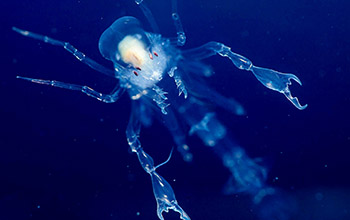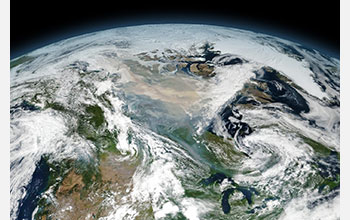
Research News
Results underscore microbial individuality
December 20, 2019
A single drop of seawater can contain a wide representation of ocean microbes from around the world — revealing new insights into the ecology, evolution and biotechnology potential of the global microbiome.
A new NSF-funded paper in the journal Cell reports a staggering degree of biological diversity that defies contemporary definitions of microbial species and illuminates reasons behind challenges in metagenomic studies. The research may further understanding of how marine microbes respond to climate change.
“This project uses a ‘big data’ approach to reading a large, randomized sample of genomes from the global microbiome, which we then explore to answer many types of questions,” said Ramunas Stepanauskas, a senior research scientist at the Bigelow Laboratory for Ocean Sciences in Maine and the senior author of the paper. “Our results provide a deeper understanding of microbial diversity in the ocean, new insights into energy sources and biosynthetic capabilities, and new tools for the study of microbes in all environments.”
The researchers analyzed more than 12,000 individual microbial genomes to build the Global Ocean Reference Genomes Tropics database. To their surprise, every cell they analyzed was genetically unique. In fact, few were similar enough that they would be considered the same species.
This new perspective on microbial diversity incorporates both local and global scales. The team used cutting-edge technologies in the Bigelow Laboratory’s Single Cell Genomics Center to analyze samples collected throughout the tropics and subtropics — two thirds of the world’s oceans — to learn about global distribution patterns. They also examined local microbial diversity by reading the blueprints of more than 6,000 individual cells in a single teaspoon of water from the Sargasso Sea.
—
NSF Public Affairs,
(703) 292-7090 media@nsf.gov








